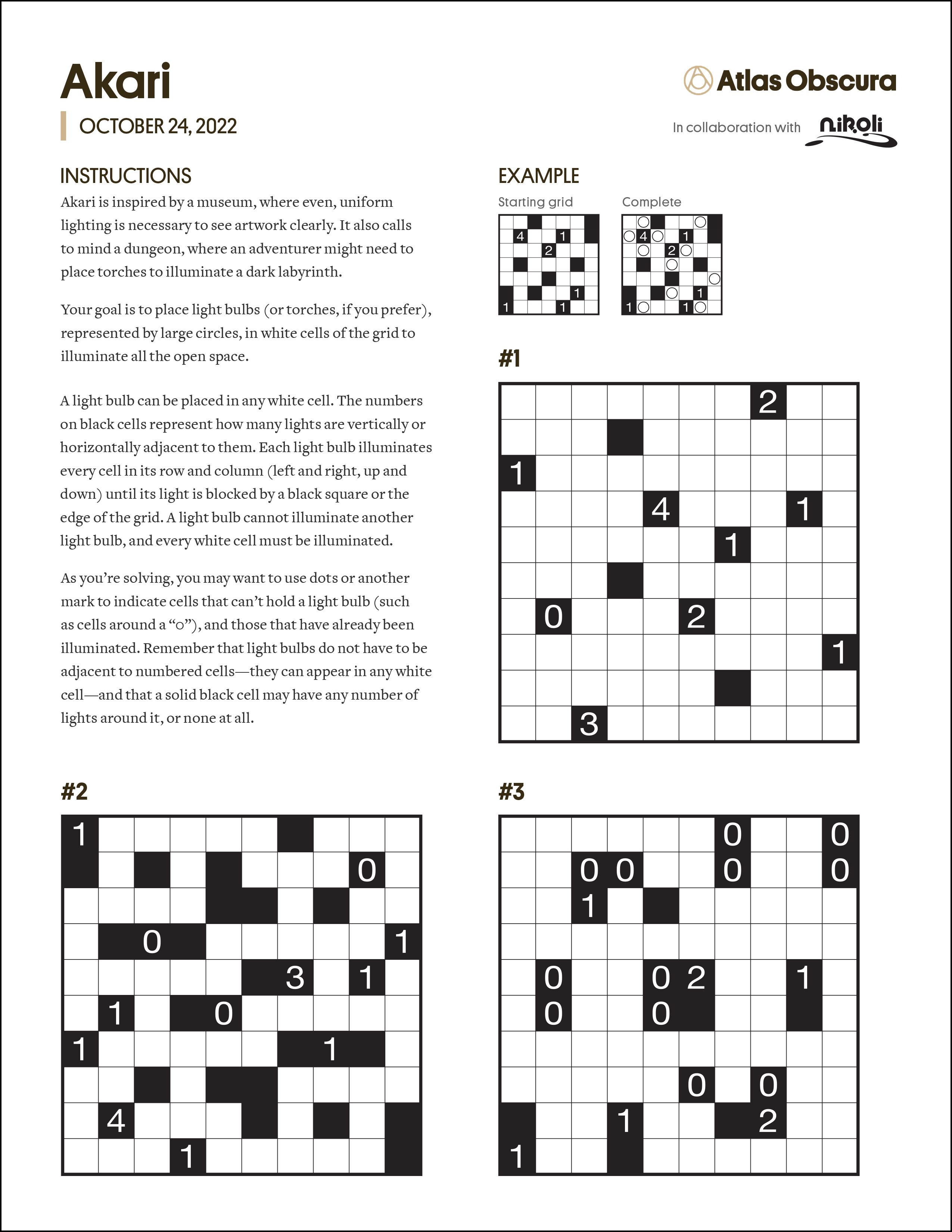
Puzzle Monday: The Art of Illumination
Among our crosswords and other puzzles, we’re featuring logic challenges from Puzzle Communication Nikoli, a cult-favorite puzzle publication from Japan. A PDF of the puzzle, as well as the solution, can be downloaded below.
One of the biggest challenges of designing puzzles for Puzzle Communication Nikoli, Japan’s supremely influential puzzle magazine, is difficulty. All of Nikoli’s puzzles—most of which are designed and refined by the magazine’s dedicated readers—must scale well in difficulty. For a puzzle to gain popularity, a creator must come up with simple rules that can be used to craft easy and hard puzzles. It invites other readers to craft examples, and soon a puzzle can grow popular—and then be promoted to become one of Nikoli’s standard puzzles.

Akari was created in 2001 by a reader known as Asaokitan. He had about 10 new puzzle ideas make it into the pages of Nikoli, and some of picked up enough fans to garner consideration for promotion. One of them, Yajisan-Kazusan, involved asking readers to determine which numbers were true and which were lies. But Akari would be his masterpiece.
Akari (light) was inspired by museums. In fact, in Japan it is still called Bijutsukan (museum), which makes it the only Nikoli puzzle (including classics like Sudoku) that have different names in Japan and abroad.
Lighting is critical in museums and galleries—usually even, uniform lighting that shows off the best of the sculptures and artwork on the walls. And the goal is to light the entire puzzle, just the right amount. Another reading of the puzzle could be as a dungeon—a labyrinth that must be lit by an intrepid adventurer.
For Akari, Asaokitan first came up with the rules of lighting—that lights illuminate in the four cardinal directions and cannot shine upon each other—and then built a puzzle idea around it. He realized he had a hit when he saw that from a simple set of rules one could make very easy and torturously difficult examples. He only sent simple examples at first. Then he turned on the difficulty. Asaokitan’s strategy extended beyond the puzzle grid—and into how he marketed the puzzle to Nikoli’s readers.
The goal of the puzzle is to place light bulbs (or torches, if you prefer), represented by large circles, in white cells of the grid to illuminate all the open space.

A light bulb can be placed in any white cell. The numbers on black cells represent how many lights are vertically or horizontally adjacent to them. Each light bulb illuminates every cell in its row and column (left and right, up and down) until its light is blocked by a black square or the edge of the grid. A light bulb cannot illuminate another light bulb, and every white cell must be illuminated.

Stumped? Download the solutions!






















Follow us on Twitter to get the latest on the world's hidden wonders.
Like us on Facebook to get the latest on the world's hidden wonders.
Follow us on Twitter Like us on Facebook